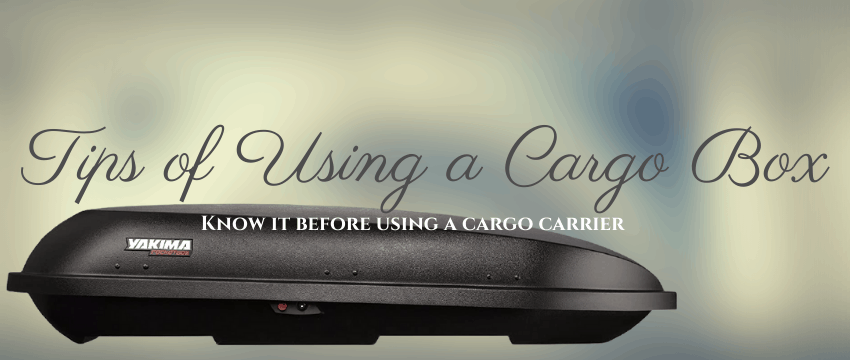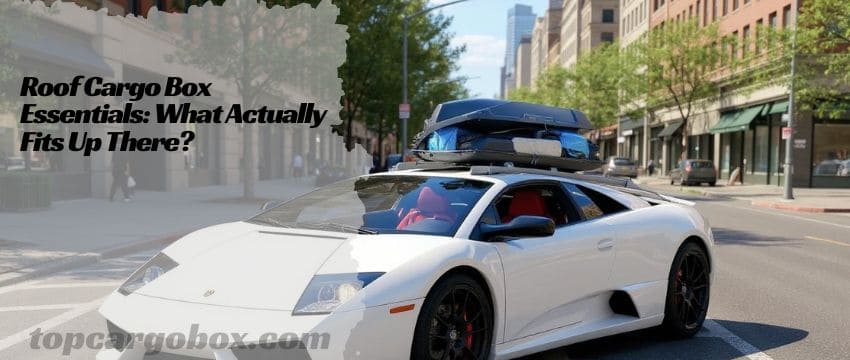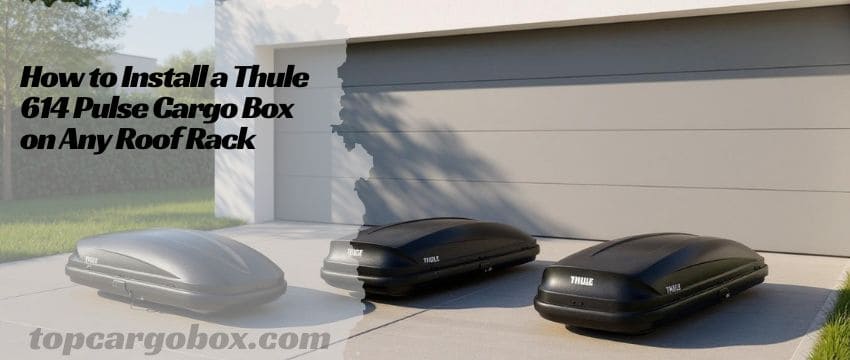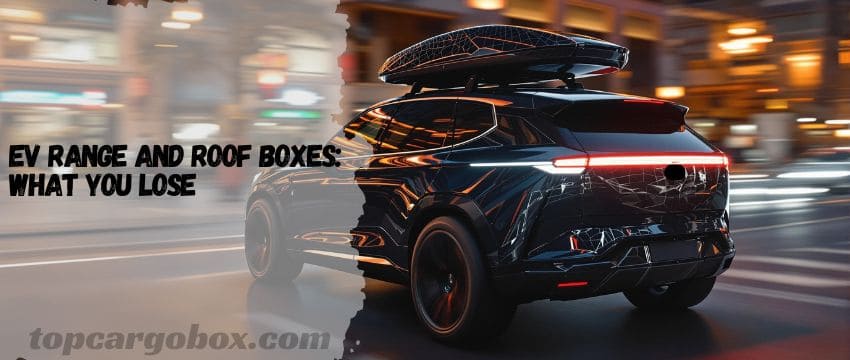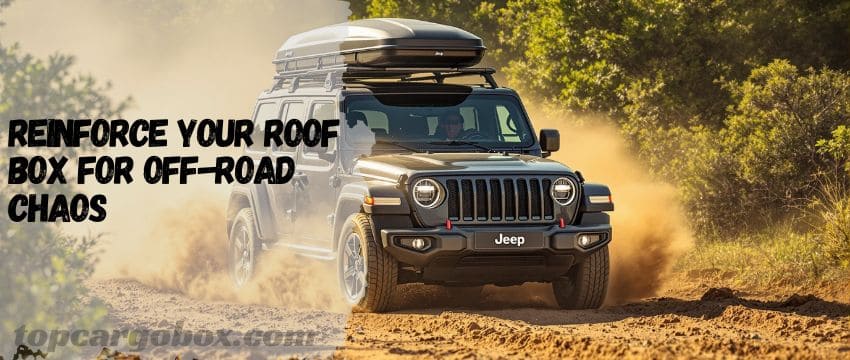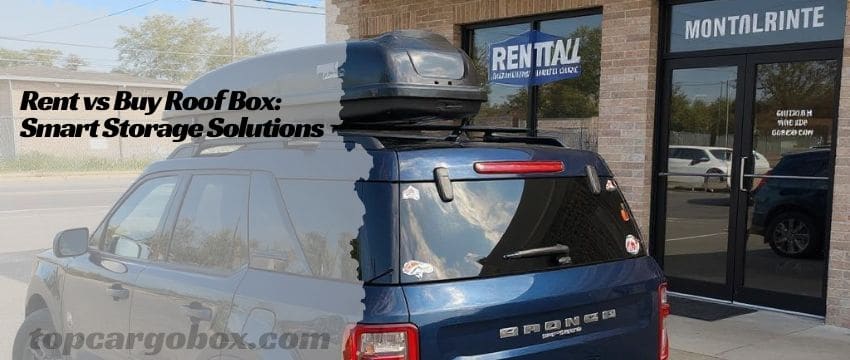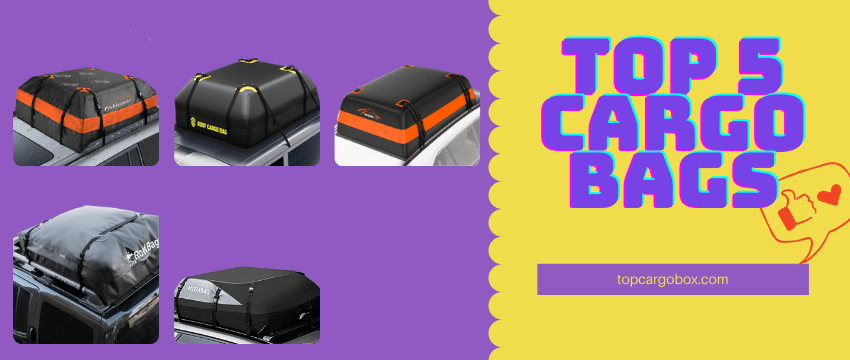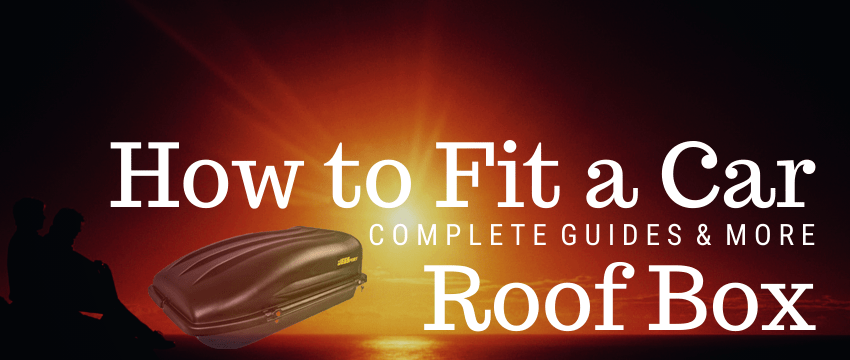When you have brought a cargo box for your family for camping events and other outdoor activities, you feel much more convenient and happy about having an enjoyable vacation time with your loved ones. You can use the roof box to carry all your essentials with you on the roads to your holiday destinations. If you don’t know what you should bring on a road journey, we have ideas for you on our site.
A cargo box adds much-needed storage space to your vehicle, and it provides security to your belongings. There is no doubt that having a roof box is always a good thing.
However, many customers are not satisfied with their rooftop carriers at first time because they don’t know the correct ways of using them. Seriously, you have to learn more about cargo boxes before you start to maximize their enjoyment.
In this article, you will discover some useful tips for having a roof box, and you can rapidly find that you have made the right decision of investing in a roof box.
By double-checking the below tips and suggestions, you will be so happy about using a cargo box for your outdoor vacations.
Know your car-weight ratio

Do you know that your vehicle has a hauling limitation? You can find your car-weight ratio in the car manual brochure. Before you assemble a cargo box for a camping trip, you have to know your car’s weight limitation.
In general, roof boxes can stow 100 lbs (45.35kg) to 250 lbs (113.398kg) of items like clothes, tents, carry-on luggage, gear, and more. Consequently, after fully loading the cargo box, you have to ensure that your belongings’ total weight does not exceed your car’s hauling regulations. You cannot overload your roof box in any situation because the overweighted cargo box can damage your vehicle or can cause accidents while your car is in motion.
Your car manual regulates a specific number to limit the allowed add-on weight to your vehicle, so you should remember it and never overload your roof box. If you lost your car manual, you could contact the local dealer to require another one for free.
Related Topic:
- How much weight you can load on the car roof or in a cargo box?
- Volkswagen Model Roof Loading Limit
- Nissan Model Roof Loading Limit
- VOLVO Model Roof Loading Limit
- Ford Model Roof Loading Limit
Security

We highly recommend you treat safety as the priority over everything throughout your entire life. As for roof boxes, security is also the top concern for everyone; consequently, you should learn before correctly using your roof box. You cannot randomly throw everything into your cargo box without organization because there are some smart ways to pack a roof box.
When you finish loading your items, you can put a polythene sheet on top of them for extra security. You can cover all the edges of your items to ensure that they stay dry and safe from unpredictable extreme weather and the environment.
Besides, except for using polythene sheets, you also can use straps to tighten your belongings in your cargo box. The straps provide added security to both the roof box and your belongings, so you can use as many as possible to maximize the safety of your cargo carrier.
By default, rooftop carriers have several straps in their package box for tightening items inside them; thus, if you need more security, you can purchase more to offer added safety to your properties.
relevant topic: is it safe to use a cargo box?
More straps More safety

After a long time, the straps will become corroded or broken because of corroding natural elements. Consequently, you have to check your strap bands once a week to ensure that they work in perfect condition without broken parts.
We highly recommend you buy some extra straps as backups on your road journeys. You can purchase straps in your local hardware stores or on Amazon or Ebay.
When one or several straps do not work, you will find some hearable noises around your car when it is in motion.
Tip: You don’t need to prepare many straps in your trunk because straps do not break at the same time. Consequently, five backups are enough for replacing the broken ones.
Related Topics: Accessories for roof cargo boxes
Tire Pressure
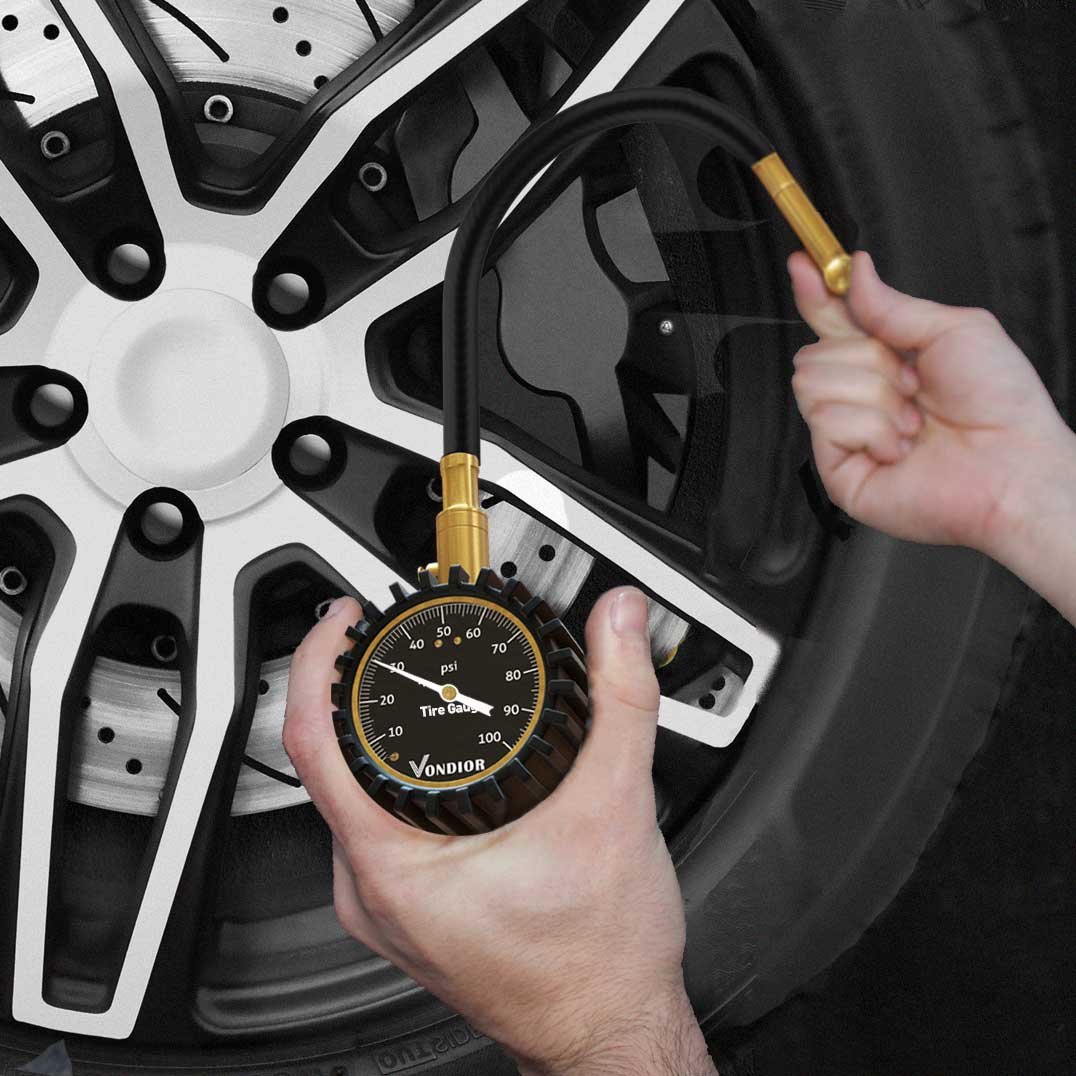
You have to do tire-pressure checking more often because it is significant for safety on the roads. When you have a fully loaded cargo box on top of your vehicle, your tire will carry extra pressure than usual.
Consequently, checking tire pressure is a must-to-do job before your road trips. You must keep in mind that you have to make sure that the number of your tire pressure is either too low or too high before loading your roof box.
In your car manual, there are recommended pressure numbers for both front and back wheels. Besides, you also can find these numbers somewhere on the side of your car doors. Then, you may need a tire gauge to read the tire pressure every time before packing your cargo box.
There are some tips for smartly packing your roof box, and you should learn first. The most important rule of stowing a cargo box is the weight balance, and you should keep in mind that the middle is first, front and back is second, large is first, and small is second.
Driver visibility

Although you have done everything right, you still need to make sure that your cargo box is in the right position. When you assemble your roof box, you have to adjust its position forward or backward without blocking the front view or rear view.
Additionally, a properly installed cargo box is also visible to other drivers on the roads; on the opposite, a poorly installed roof box has the chance to create an accident for both you and other vehicles.
A correct installation of a cargo box can handle all the above problems at once, so you can learn more on our site.
There are some tips for installing a cargo box
Related Topic: how fast you can drive with a roof cargo box? how to drive with a roof cargo box?
Stopping During a long time Drive

A fully loaded cargo box adds extra pressure to your car’s wheels and engine, so the possibility of accidents is increasing dramatically. You have to pay extra attention to your driving on the roads, and you need to stop after one hour of driving. When you stop beside the highways, the tire pressure is recovering from the ultra-low condition.
A temporary stop can release the pressure from both engine and the wheels, so you have to do it periodically. While your car is taking a break, you can also check the straps and other components to confirm that your roof box is securely in its position without moving an inch.
If you find that your roof box budges a little or slides away from the centerline, you have to adjust it immediately without any hesitation. However, it is rare to find a situation like the above.
Be Careful on the Roads

It is easy to forget that you have a cargo box on your vehicle when you are driving. When you go through a tunnel or an archway in a bridge, you should remind yourself that an extra height is on top of your car.
If the tunnel or the archway is low, the infrastructure can hit off your roof box in seconds and cause damages, even a severe accident to your vehicle.
It is a good idea to figure out the total height; you also need to remember that number in your head as a regulation to compare with the number on those road signs. You never go through a tunnel that is lower than your car’s height because it is dangerous.
Fortunately, most cargo carriers are not troublemakers, and their height is ok for most road conditions.
What to do if you encounter a low-lying infrastructure? There are two options for you to deal with a situation like the above: changing a route or taking off your roof box. We recommend you change a path because a fully loaded cargo box is not easy to remove.
Insurance Company

Car insurance companies require to know any physical changes to your vehicle, so you need to tell them that you have added a cargo carrier to your car.
If you don’t announce to your insurance company the changes you have made to your car, the insurance company will not cover your claims until its knowledge about the change.
Consequently, you should notify the insurance company as soon as possible when you have assembled a roof box on top of your vehicle.
Additionally, some insurance companies don’t cover attachments like roof boxes or rack bars; thus, it is always better to let your insurance company know what you have added to your car. The insurance company will provide suitable solutions with its previous knowledge about your roof box to your auto.
Related Topic: do you need a special license for roof cargo boxes?
Gas Mileage
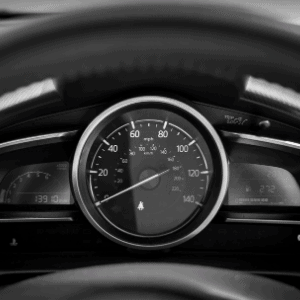
If you are rich, you can ignore this point. Cargo carriers will affect your gas mileage a little, so it is better to know that before your complaints. SUVs have a higher gravity center than sedans or other types of vehicles, so SUV owners should pay extra attention to their driving when they have a roof box on top.
Consequently, if you don’t want too much waste on your gas consumption, you should choose an aerodynamic shape cargo carrier to reduce wind noise and minimize gas waste.
We have published an article talking about the methods of reducing the wind noise of the roof rack or cargo box for your interest.
Weather Conditions

Weather is a huge consideration when you use a cargo carrier in your outdoor adventures. Rains and sleets are top concerns when it comes to using a roof box on the roads. Fortunately, most rooftop carriers are waterproof, sturdy, and durable.
When you have decided to choose a cargo carrier for your family, you can find tons of users’ feedback on the manufacturer’s site or other third-party selling sites. You can read feedback or terminologies about your choices for building knowledge about how good are those products.
Cargo boxes on the market, they built from ABS materials that are 100% water-resistant and sturdy enough to confront unpredictable accidents and rough outdoor environments.
If you are not sure about investing in a roof box or a cargo bag, you can know more on our site.
Types of Cargo Carriers
As we all know, there are many types of cargo carriers on the market as roof racks, cargo boxes, cargo bags, roof baskets, and other cargo gear carriers(bike carriers and snowboard carriers).
You can learn much about cargo boxes from their sizes, features, shapes, and usage on our site.
Nowadays, most cargo carriers are universally fitting to most types of vehicles. However, you have to research online to find suitable rooftop carriers for your specific car.
Other car rooftop or rear cargo carriers for bikes, kayaks, luggage, and more. – How many types of cargo carriers do we have on the market? Find the answer…
A list of best-selling soft cargo bags for all SUVs, Sedans, Trucks, and Vans – Cargo bags don’t work with roof racks, and they are easy to store because they have a foldable body. They are cheaper than other carriers, and they have flaws like being easy to cut open, higher wind noise, and more waste on gas mileage.
A list of 10 cargo baskets for all SUVs, Sedans, Vans, and Trucks – Cargo baskets are suitable for people who want to mount multiple carriers on the car roof, and they can use cargo baskets as the bottom part like a frame construction.
Conclusion
By following this article, you can get some background information about how to safely and accurately use your roof cargo box. If you like this article, please share it on social networks.
Our team is creating outdoor-gear relevant articles with passion. If our articles can help you to find the correct solutions for your questions, we will be happy about that. In the content creation process, we usually collect accurate and useful information online or offline to compile our content in an organized way. Consequently, we can guarantee that you can discover some expected answers to your questions. We appreciate your time on our site.

